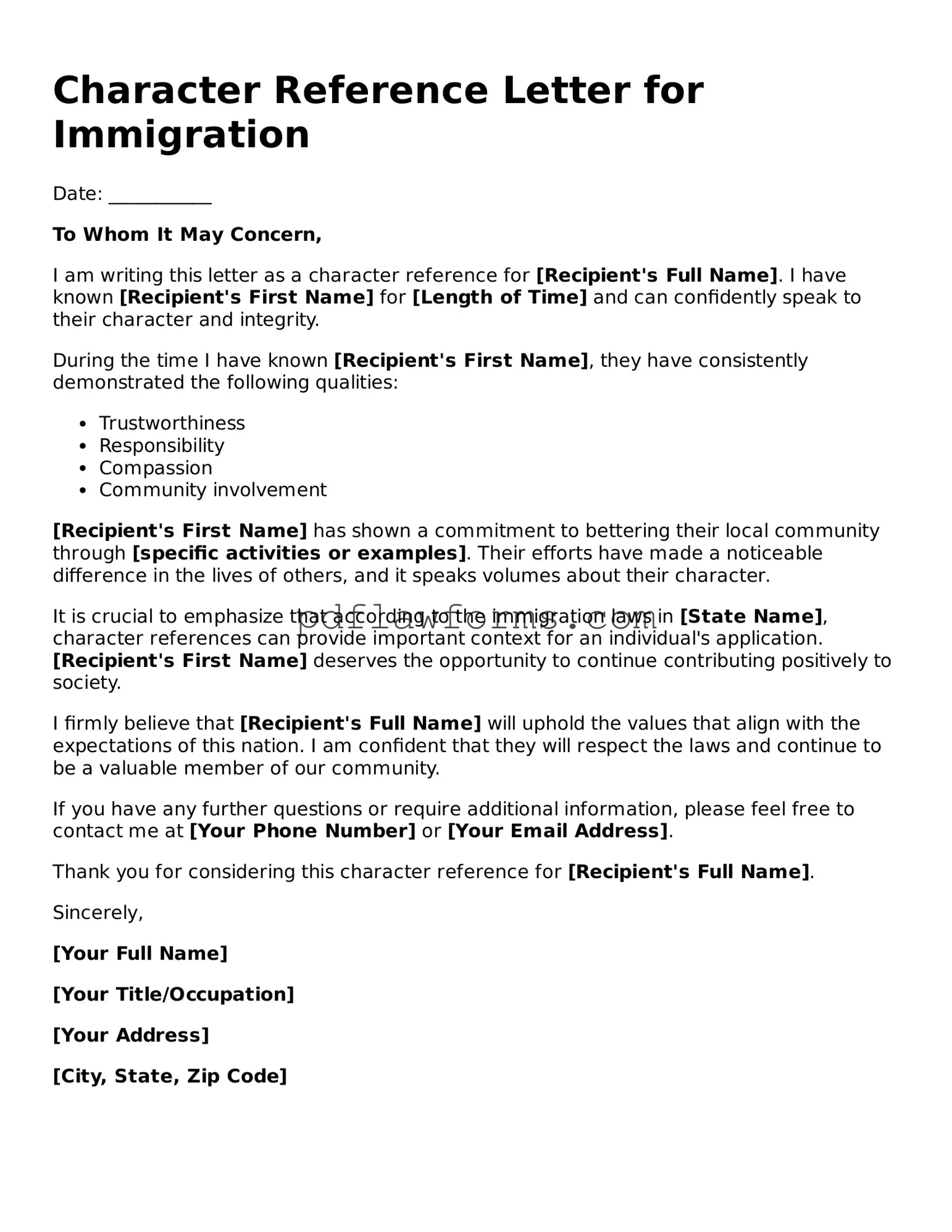When navigating the complex landscape of immigration processes, individuals often encounter various forms that play a critical role in their applications. One such essential document is the Character Reference Letter for Immigration. This letter serves as a testament to an applicant's character, providing insights into their moral standing and contributions to society. Typically written by friends, family members, employers, or community leaders, the letter aims to offer a personal perspective on the individual’s qualities, such as integrity, responsibility, and community involvement. It is important for the writer to highlight specific examples that illustrate the applicant's positive attributes and to explain how these traits align with the values upheld by the immigration system. Additionally, the letter should include relevant details about the relationship between the writer and the applicant, establishing credibility and context. Crafting a compelling Character Reference Letter can significantly enhance an immigration application, as it provides immigration officials with a deeper understanding of the applicant's character beyond the formal documentation. Ultimately, this form not only reflects the individual’s personal journey but also serves as a bridge to their future in a new country.
